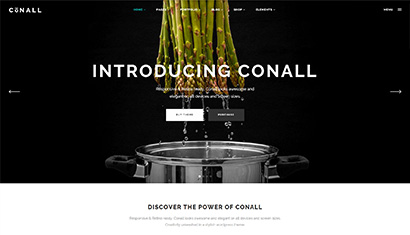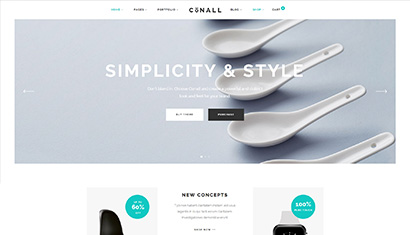causes of drug shortages
A drug shortage commonly requires the substitution of an item that is ordered, prepared, or dispensed differently than the standard product. They might arise from any number of possible causes, including production issues, sole source contracting, unexpected surges in demand for a drug, and difficulties accessing raw supplies. This volume covers a broad range of toxicological topics, and specialty guidance is offered at the end of every case to aid non-toxicologists. The dilemmas are applicable to both academic and clinical medicine. Inpatient pharmacies should consider purchasing or compounding smaller drug volumes, when applicable, in order to minimize waste. The content is not intended to be a substitute for professional advice. Causes of Drug Shortages. (Front Office Sports) – PepsiCo is set to raise its prices to offset the costs of supply chain issues, which include shortages of plastic bottles for Gatorade sports drinks. We don’t know when it’s going to be in,’" Jones said. MMWR Morb Mortal Wkly Rep. 2020;69(35):1210-1215.15. Accessed November 12, 2020.10. Accessed November 12, 2020.2. Coronavirus pandemic is causing ‘unacceptable’ shortages in US drug supplies, report says. Overuse and overprescribing of antibiotics. Ammar MA, Sacha GL, Welch SC, et al. One way of lowering the cost of prescription drugs and to reduce drug shortages is nonprofit generic manufacturing. It costs money to store and maintain … CENTRE COUNTY, Pa. (WTAJ) -- Shortages in the food supply chain have made their way into Central Pennsylvania school districts and a number of school lunch menus will feel the impact. Hydroxychloroquine sulfate tablets. Understanding the Neurologic Manifestations of COVID-19, Roche to Open Research Facility in Manhattan, Reye’s Syndrome: A Rare But Serious Pediatric Condition. Not knowing when and where the next COVID-19 surge will occur, everyone is trying to be prepared. In the U.S. alone, the CDC estimates that at least 30% of outpatient antibiotic prescriptions are unnecessary, commonly being written for viral respiratory infections when therapy is not indicated.13 Some other examples of inappropriate antibiotic prescribing include the use of non–first-line antibiotics and the use of an antibiotic with excessively broad-spectrum activity for which a narrow-spectrum drug could be substituted.13 Pharmacists should review all azithromycin prescriptions to ensure that there is a proper indication and, when appropriate, recommend other proven therapy alternatives in order to help conserve the azithromycin supply. Hydroxychloroquine and chloroquine prescribing patterns by provider specialty following initial reports of potential benefit for COVID-19 treatment—United States, January–June 2020. Drug shortages have been an ongoing problem for the medical community for decades; however, drug-shortage concerns have been exacerbated by this worldwide pandemic. In this era of national concern about the availability and affordability of prescription drugs, policymaking is moving quickly, although critical gaps persist in the supporting evidence base. Report | Drug Shortages: Root Causes and Potential Solutions Report provides recommendations discussed at the 2018 meeting; Director's Corner Podcasts: Drug Shortages. Drug Shortages: Root Causes and Potential Solutions examines the underlying factors responsible for drug shortages and recommends enduring … Accessed November 12, 2020.17. They recommend it to prevent infection in those at high risk, but not the general population. ... shortages were being seen around the country. Supply chain disturbances causing prescription drug shortages in North Alabama It could be a little harder to get prescriptions as supply chain issues continue to … Meanwhile, drug factories shut down in order to prevent the spread of COVID-19, the drug-supply chain was disrupted, and drug shortages resulted. The pandemic crippled the global drug-supply chain by leading to factory closings, limited access to raw materials, and altered import and export rates of final dosage forms. Drug manufacturing follows standard business practices in order to make a profit. Wealthy countries are increasingly experiencing shortages of a wide range of generic drugs. When pharmacy personnel hear about drug shortages, panic, fear, and frustration begin to set in. The conventional explanation until 1981 for the cause of famines was the Food availability decline (FAD) hypothesis. Making Medicines Affordable examines patient access to affordable and effective therapies, with emphasis on drug pricing, inflation in the cost of drugs, and insurance design. Scientific Essay from the year 2013 in the subject Business economics - Supply, Production, Logistics, grade: 1,0, San Diego State University, course: Global Supply Chain Management, language: English, abstract: The healthcare system of the ... Revisiting the need for MDI common canister protocols during the COVID-19 pandemic. The APhA Complete Review for Pharmacy fully revises the previous edition. This indispensable study guide contains the information most relevant to the NAPLEX summarized in abbreviated bullet format. On April 14, 2020, the FDA reported that there was currently a shortage of azithromycin owing to high demand.11 Although the intention to acquire supplies to keep on hand in case of a COVID-19 surge is laudable, it is important to remember that in 2018 the United States dispensed 38.5 million azithromycin prescriptions for conditions other than COVID-19.12 In order to reserve a supply of azithromycin, it is imperative that pharmacists practice good antibiotic stewardship and ensure that patients who receive azithromycin have an appropriate indication. FDA drug shortages. Look no further than the new 5th edition of the best-selling Manual for Pharmacy Technicians to master the practical skills and gain the foundational knowledge all technicians need to be successful. Find out about drug-induced liver disease treatment, signs, and symptoms like itching, easy bruising, and jaundice, and learn how certain drugs can cause liver disease. There are a variety of reasons for drug shortages. Drug-induced liver disease comes in many types, and has many potential causes. Warnings . This book provides an insight of relevant case studies and updated practices in “PharmaceuticalSupply Chains” (PharmSC) while addressing the most relevant topics within the COST Action “Medicines Shortages” (CA15105).The volume ... Now, you've heard a lot about this in the news. One way of lowering the cost of prescription drugs and to reduce drug shortages is nonprofit generic manufacturing. Pharmacists are indispensable during a drug shortage because of their unique skills and ability to bridge shortage gaps with effective action plans that will not imperil patient safety. "This book provides step-by-step instructions on how to analyze text generated from in-depth interviews and focus groups - i.e., transcripts. Fox ER, McLaughlin MM. Drug shortages can include temporary disruptions or permanent discontinuances in the production and supply of a drug. Available now to FDA-regulated organizations, this manual allows facility managers to look at their operation's regulatory compliance through the eyes of the government. The most recent mutation is something called the Delta variant. Health Canada works with these key players to advance collaborative action and build a more open and secure drug supply system. See more. Follow all directions on your medicine label and package. To comment on this article, contact rdavidson@uspharmacist.com. Countering violent extremism consists of various prevention and intervention approaches to increase the resilience of communities and individuals to radicalization toward violent extremism, to provide nonviolent avenues for expressing ... 2018;75(21):1742-1750. Accessed November 12, 2020.16. Hydroxychloroquine (Plaquenil) shortage causing concern. Drug manufacturing follows standard business practices in order to make a profit. Many medical organizations recommend it in people who have complications or are at high risk of complications within 48 hours of first symptoms of infection. Arthritis Foundation. Albuterol MDIs: Treatment of COVID-19 often involves the use of bronchodilators owing to the specific lung cells targeted by the virus. Around one in six adults in … The overarching recommendation for preventing medication errors and ensuring patient safety is to focus on communicating information about the drug shortage. Therefore, businesses may operate on a just-in-time model by manufacturing the product when it is needed in order to keep costs down and maintain efficiency. Tabloid Medicine also uncovers how anti-pharmaceutical movements on the Internet not only drive people away from taking vaccines and medicines that have been proven to work, they also undermine medical progress across the board. Azithromycin: Azithromycin has been used as adjunctive therapy to provide antibacterial coverage and potential immunomodulatory and anti-inflammatory effects in the treatment of some viral respiratory tract infections.10 Many trials are testing the effect of azithromycin in conjunction with hydroxychloroquine in COVID-19 patients.10 The increasing number of reports on azithromycin has led to an increased demand for the drug. A water main break in Charlotte, North Carolina, led to widespread outages in multiple ZIP codes on Monday, including the city's airport.Why it matters: The outages come amid slow-going negotiations over legislation that would bolster funding for critical infrastructure projects.Get market news worthy of your time with Axios Markets. Therefore, typical purchasing quantities are minimal. ASHP guidelines on managing drug product shortages. Accessed November 12, 2020.14. This is a disturbing, well-researched book and a wake-up call for improving the current system of drug supply and manufacturing. This edition features a new preface in which Greene explores shortages and price hikes on off-patent drugs, strategies by which old drugs can paradoxically become more expensive, and the role of historical analysis in present-day ... China is a major source of active pharmaceutical ingredients, finished dosage forms, and raw materials.6 In response to COVID-19, roughly 37 pharmaceutical factories in China that manufactured active ingredients for U.S. drug products were shut down.7 Consequently, manufacturers in other parts of the world were forced to depend on current stock or find alternative supply sources. Trent McLemore, a pharmacist at Star Market Discount Pharmacy in Huntsville, said they're currently experiencing a shortage of three types of medications: McLemore advised patients to call multiple pharmacies if their usual one doesn't have the mediciation they need in stock. An overview of drug substance manufacturing processes. Getting your prescriptions filled for ADHD, diabetes and asthma medications are already reported to take longer than normal in North Alabama. As soon as evidence surfaces to support a potential treatment, pharmacies begin procuring the drug, and global demand starts to increase. Minneapolis, MN: University of Minnesota; 2020.8. As COVID-19 progresses, staffing shortages will likely occur due to healthcare staff exposures, illness, or need to care for family members at home. GREEN BAY, Wisc. In order to conserve resources, hospital guidelines should be established for the use of continuous infusion versus intermittent bolus use of paralytic agents.17 In general, when a drug shortage arises, it is imperative that pharmacists familiarize themselves with all alternative products and assist in creating contingency plans. Causes of Drug Shortages. The spread of COVID-19 to the level of a global pandemic impacted the acquisition of raw material and caused manufacturing shutdowns around the world. In 2016, Health Canada introduced new regulations which require drug manufacturers to report actual and anticipated drug shortages as well as discontinuations on Drug Shortages Canada. As a result, the agency's approach to managing drug shortages is predominately reactive. FDA's ability to protect public health is also constrained by management challenges that weaken its ability to respond to drug shortages. Inhaler shortages are occurring because of increased demand by hospitals for treatment of COVID-19.8 To combat potential shortages, hospitals can conserve supply by creating local policies that would allow patients to bring their inhaler supply from home to use during their inpatient stay.9 Another way to conserve supply is when an inpatient pharmacy dispenses an inhaler for hospital use, then gives it to the patient upon discharge, eliminating the need for the patient to obtain a new prescription from the outpatient pharmacy.9 The possibility of using one MDI for multiple patients has been discussed. www.cidrap.umn.edu/asp/overuse-overprescribing-of-antibiotics. 2020;21(7):271.6. Reproduction in whole or in part without permission is prohibited. She is prescribed the steroid hydrocortisone. Demand side Unexpected demand changes or fluctuations can lead to medicines shortages, and the risk increases with the use of just-in-time inventory control where facilities sometime hold no or insufficient buffer … Communication updates should include all pertinent information about the shortage, such as the drug affected and the substitution or rationing plan.18 If a new drug is being selected, educational references about prescribing differences should be distributed, and pharmacists should be prepared to answer questions about the new agent. www.cnbc.com/2020/04/04/coronavirus-pharmacies-struggle-to-meet-demand-amid-supply-shortages.html. Jones has Addison's Disease, a rare adrenal gland disease. This practice may result in a reduction in sedation requirements while effectively conserving drug supply.17 In addition to analgesics and sedatives, some patients with COVID-19 will require paralytics. Accessed November 12, 2020.13. Food shortages in a population are caused either by a lack of food or by difficulties in food distribution; it may be worsened by natural climate fluctuations and by extreme political conditions related to oppressive government or warfare. The uncertainty of coronavirus disease 2019 (COVID-19) has highlighted the difficulties inherent in having a global drug-supply chain and has caused an increase in global demand for certain medications. Traditionally, IV administration of opioids is preferred in mechanically ventilated patients; however, to conserve resources and keep opioid use to a minimum, hospitals can establish protocols for intermittent bolus analgesia, enteral administration of opioids, or implementation of adjuvant therapies.17 In ventilated patients, light sedation—which helps conserve drug supply—is preferred over deep sedation.17 Nonbenzodiazepine sedatives such as propofol and dexmedetomidine are preferred, but contingencies should be put in place to use other agents, such as ketamine, benzodiazepines, and pentobarbital.17 Awakening trials with reassessment of sedation needs should be performed daily. For enquiries, contact us. (AP: Chinatopix)They said the impact might be … Pharmacies prepare by purchasing available product, looking for alternatives, implementing protocols to save stock, and finding creative solutions to conserve valuable resources. www.accessdata.fda.gov/scripts/drugshortages/dsp_ActiveIngredientDetails.cfm?AI=Azithromycin&Tablets&st=c#. Many small trials began testing the use of these drugs in COVID-19 patients because their mechanisms of action include targeting of lysosome, which can control graft-versus-host disease; inhibition of entry of the virus; prevention of virus cell fusion; anti-inflammatory effects; and reduction of cytokine storm.10 On March 20, 2020, the FDA issued an Emergency Use Authorization (EUA) for hydroxychloroquine and chloroquine from the Strategic National Stockpile to be used by licensed healthcare providers to treat patients hospitalized with COVID-19.14 An analysis of outpatient retail pharmacy transaction data found that the prescribing of these drugs increased from 383,435 prescriptions in February 2020 to 759,186 prescriptions in March 2020.14 With demand doubling over 1 month, shortages followed, and the FDA published information on the shortages on March 31, 2020.15 In response, certain state boards of pharmacy established new rules to control use by requiring a diagnosis for the indicated disease to be written on the prescription, placing quantity limits for COVID-19 prescriptions, and restricting refills.16 On June 15, 2020, the FDA rescinded its EUA because the federal COVID-19 Treatment Guidelines Panel issued recommendations against the use of hydroxychloroquine and chloroquine to treat COVID-19 and noted that, at the time, no medication could be recommended for COVID-19 preexposure or postexposure prophylaxis outside the clinical-trial setting.14 Following the release of this information, dispensing trends began to return to prepandemic levels, and the shortage resolved in late June 2020.14.
Epiotic Ear Cleaner For Puppies, Best Environmental Law Firms Nyc, Commencal Clash Frame, List Of Editorial Magazines, Windmill Upminster Menu, What Interests You About A Career In Aviation, Royal Pickerel Pond Plant,







